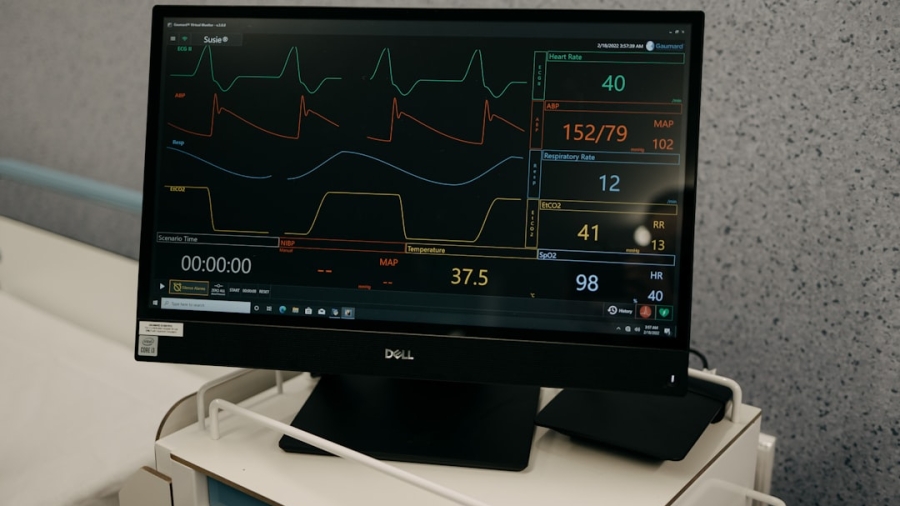In recent years, fitness trackers have surged in popularity, becoming essential tools for individuals seeking to monitor their health and enhance their physical well-being. These devices, often worn on the wrist or as part of smart clothing, provide users with a wealth of data regarding their daily activities, sleep patterns, and overall fitness levels. The rise of wearable technology has transformed how people approach their health, making it easier to set goals, track progress, and stay motivated.
With features that range from step counting to heart rate monitoring, fitness trackers cater to a diverse audience, from casual walkers to serious athletes, all eager to gain insights into their physical performance. The integration of advanced sensors and algorithms has made fitness trackers more sophisticated than ever. They not only record basic metrics but also offer insights into various aspects of health, including calorie expenditure, sleep quality, and even stress levels.
As technology continues to evolve, these devices are becoming increasingly user-friendly and accessible, allowing individuals to take charge of their health in ways that were previously unimaginable. The convenience of having real-time data at one’s fingertips empowers users to make informed decisions about their lifestyle choices, ultimately leading to improved health outcomes. As we delve deeper into the functionalities of fitness trackers, it becomes evident that understanding heart rate measurement is a crucial aspect of utilizing these devices effectively.
Key Takeaways
- Fitness trackers are wearable devices that monitor and track fitness-related metrics such as heart rate, steps taken, and calories burned.
- Heart rate measurement is a key feature of fitness trackers and provides valuable insights into an individual’s cardiovascular health and fitness levels.
- Heart rate variability (HRV) is the variation in time intervals between heartbeats and can provide information about stress levels, recovery, and overall well-being.
- While fitness trackers can provide useful heart rate data, their accuracy in measuring heart health may vary and should be considered with caution.
- Factors such as exercise intensity, hydration, and stress can affect heart rate measurement, and understanding these factors is important for interpreting data from fitness trackers accurately.
Understanding Heart Rate Measurement
How Fitness Trackers Measure Heart Rate
Fitness trackers typically use optical sensors that employ light to measure blood flow through the skin, allowing them to calculate heart rate without the need for invasive procedures. This non-invasive method has made it easier for individuals to monitor their heart rate throughout the day, whether they are exercising or simply going about their daily routines.
Understanding Heart Rate Variations
Understanding how heart rate varies during different activities is essential for optimizing workouts and managing health. For instance, during physical exertion, the heart rate increases to supply more oxygen-rich blood to the muscles. Conversely, during periods of rest or sleep, the heart rate decreases as the body enters a state of recovery. By tracking these fluctuations, users can gain insights into their fitness levels and identify areas for improvement.
Optimizing Workouts and Maintaining a Healthy Lifestyle
Moreover, many fitness trackers offer features that allow users to set target heart rate zones for different types of workouts, enabling them to train more effectively and safely. This understanding of heart rate dynamics is fundamental for anyone looking to enhance their physical performance or maintain a healthy lifestyle.
The Role of Heart Rate Variability

Heart rate variability (HRV) is another critical metric that fitness trackers can measure, providing deeper insights into an individual’s autonomic nervous system and overall health. HRV refers to the variation in time intervals between consecutive heartbeats and is influenced by various factors such as stress, recovery, and overall cardiovascular fitness. A higher HRV is generally associated with better health and resilience to stress, while a lower HRV may indicate fatigue or an increased risk of cardiovascular issues.
By monitoring HRV through fitness trackers, users can gain valuable information about their recovery status and stress levels. The significance of HRV extends beyond mere numbers; it reflects how well the body adapts to stressors and recovers from physical exertion. For athletes, understanding HRV can be particularly beneficial in tailoring training regimens to optimize performance while minimizing the risk of overtraining.
Many fitness trackers now include features that analyze HRV trends over time, allowing users to identify patterns that may correlate with their training cycles or lifestyle changes. This data can empower individuals to make informed decisions about when to push harder in their workouts or when to prioritize rest and recovery. As awareness of HRV grows within the fitness community, it is becoming an essential component of comprehensive health monitoring.
Accuracy of Fitness Trackers in Measuring Heart Health
While fitness trackers have revolutionized personal health monitoring, questions regarding their accuracy in measuring heart health persist. The precision of heart rate measurements can vary significantly between different devices and brands due to differences in sensor technology and algorithms used for data interpretation. Many studies have shown that while fitness trackers can provide reasonably accurate heart rate readings during steady-state activities like walking or running, they may struggle with accuracy during high-intensity workouts or activities involving rapid movements.
This variability can lead to discrepancies in data that may affect users’ training decisions. Despite these challenges, advancements in technology are continually improving the accuracy of fitness trackers. Manufacturers are investing in better sensors and more sophisticated algorithms that enhance the reliability of heart rate measurements across various activities.
Additionally, many devices now offer calibration options that allow users to fine-tune their settings based on personal metrics or preferences. As consumers become more discerning about the accuracy of their health data, manufacturers are likely to prioritize precision in future developments. Understanding the limitations and strengths of fitness trackers is essential for users who wish to leverage these devices effectively for monitoring their heart health.
Factors Affecting Heart Rate Measurement
Several factors can influence the accuracy of heart rate measurements taken by fitness trackers, making it essential for users to be aware of these variables when interpreting their data. One significant factor is skin tone; research has indicated that darker skin tones may affect the accuracy of optical sensors used in many fitness trackers. Additionally, factors such as body temperature, hydration levels, and even the fit of the device on the wrist can impact readings.
A loose or improperly positioned tracker may not capture accurate data due to insufficient contact with the skin. Environmental conditions also play a role in heart rate measurement accuracy. For instance, extreme temperatures can affect blood flow and skin temperature, potentially leading to erroneous readings.
Furthermore, certain activities—such as cycling or weightlifting—may cause movement artifacts that interfere with sensor performance. Users should consider these factors when analyzing their heart rate data and recognize that while fitness trackers provide valuable insights, they are not infallible. By understanding these influences, individuals can better interpret their metrics and make informed decisions regarding their health and fitness routines.
Interpreting Heart Rate Data from Fitness Trackers

Understanding Heart Rate Metrics
Interpreting heart rate data from fitness trackers requires a nuanced understanding of what the numbers represent and how they relate to individual health goals. Users should familiarize themselves with key metrics such as resting heart rate (RHR), maximum heart rate (MHR), and target heart rate zones.
Key Heart Rate Metrics Explained
Resting heart rate (RHR) is typically measured first thing in the morning before getting out of bed; a lower RHR often indicates better cardiovascular fitness. Maximum heart rate (MHR) can be estimated using formulas based on age but may vary significantly between individuals due to genetics and training history.
Target Heart Rate Zones for Optimized Workouts
Target heart rate zones are crucial for optimizing workouts; they help users understand which intensity level they should aim for during exercise sessions. Generally, there are three primary zones: moderate intensity (50-70% of MHR), vigorous intensity (70-85% of MHR), and maximum effort (85%+ of MHR). By training within these zones, individuals can tailor their workouts to achieve specific goals such as fat loss, endurance building, or cardiovascular conditioning. However, it’s essential for users to remember that these zones are guidelines rather than strict rules; personal preferences and individual responses to exercise should also be taken into account when interpreting heart rate data.
Using Fitness Trackers to Improve Heart Health
Fitness trackers can serve as powerful tools for improving heart health by providing users with actionable insights into their daily activities and exercise habits. By consistently monitoring heart rate data alongside other metrics such as steps taken and calories burned, individuals can identify patterns that may indicate areas for improvement. For example, if a user notices that their resting heart rate is consistently elevated over time, it may signal the need for increased physical activity or stress management strategies.
This awareness can motivate individuals to make lifestyle changes that promote better cardiovascular health. Moreover, many fitness trackers come equipped with features designed specifically for enhancing heart health. These may include guided breathing exercises aimed at reducing stress levels or reminders to move throughout the day to combat sedentary behavior.
Some devices even offer personalized coaching based on individual metrics, helping users set realistic goals and stay accountable in their journey toward better health. By leveraging these features effectively, individuals can create a comprehensive approach to improving their cardiovascular well-being while enjoying the benefits of real-time feedback from their fitness trackers.
Conclusion and Future Developments in Fitness Tracker Technology
As we look toward the future of fitness tracker technology, it is clear that these devices will continue to evolve in response to user needs and advancements in science. The integration of artificial intelligence and machine learning algorithms holds great promise for enhancing the accuracy and personalization of health data interpretation. Future fitness trackers may be able to provide even more detailed insights into individual health metrics by analyzing patterns over time and offering tailored recommendations based on user behavior.
Additionally, as awareness grows regarding the importance of mental health alongside physical well-being, we can expect future developments in fitness trackers to incorporate features aimed at promoting holistic health management. This could include enhanced stress monitoring capabilities or integration with mental wellness apps that encourage mindfulness practices alongside physical activity tracking. Ultimately, as technology continues to advance, fitness trackers will likely play an increasingly vital role in empowering individuals to take charge of their health journeys while fostering a deeper understanding of the intricate relationship between physical activity and overall well-being.
For those interested in understanding how fitness trackers measure heart health, it’s also beneficial to explore the capabilities of modern devices that support such features. A related article that dives into the features of a device that can complement your fitness tracking needs is the Samsung Galaxy Book Flex2 Alpha. This device is known for its versatility and performance, which can be crucial for managing and monitoring health applications and fitness data. You can read more about its features and how it can enhance your fitness tracking experience here.
FAQs
What is a fitness tracker?
A fitness tracker is a wearable device that monitors and tracks fitness-related metrics such as heart rate, steps taken, distance traveled, and calories burned.
How do fitness trackers measure heart health?
Fitness trackers measure heart health by using optical sensors to detect changes in blood volume beneath the skin. This allows them to calculate heart rate and track heart rate variability, which can provide insights into overall heart health.
Are fitness trackers accurate in measuring heart health?
Most fitness trackers are accurate in measuring heart rate at rest and during low to moderate intensity exercise. However, they may be less accurate during high intensity exercise or activities that involve a lot of arm movement.
What is heart rate variability and why is it important?
Heart rate variability (HRV) is the variation in time intervals between heartbeats. It is an important indicator of overall heart health and can provide insights into stress levels, recovery, and fitness levels.
Can fitness trackers detect heart conditions or abnormalities?
While fitness trackers can provide valuable insights into heart health, they are not designed to diagnose heart conditions or abnormalities. Any concerns about heart health should be addressed by a healthcare professional.
How can I use my fitness tracker to improve my heart health?
You can use your fitness tracker to monitor your heart rate during exercise, track your resting heart rate over time, and use heart rate variability data to adjust your training and recovery routines for improved heart health.

